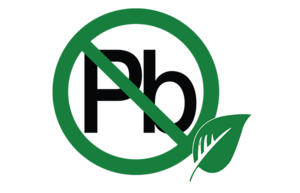LISLE, Ill. – The Water Quality Association supports efforts toward a safer drinking water supply that the U.S. Environmental Protection Agency took Thursday in announcing proposed Lead and Copper Rule revisions. The proposal, the first major overhaul of the rule since 1991, seeks to improve how communities test for lead in drinking water and force quicker action when lead is detected.
“We are pleased to see the EPA taking further steps to strengthen our nation’s battle against lead in drinking water,” said WQA Executive Director Pauli Undesser. “While we certainly support the long-term goal of lead line replacement, we recognize such efforts will take years to complete, and that’s why our members stand ready with immediate water filtration solutions to deal with lead and other challenges to our drinking water supply.”
The proposal continues the push for replacement of lead service lines and requires communities to inventory lead service lines, provide corrosion control treatment, follow new improved sampling procedures, monitor schools and child-care centers and increase communications with residents when their water tests at higher than the action level of 15 parts per billion (ppb) of lead. Although the plan does not change that action level, it sets a new “lead trigger level” of 10 ppb, which would require water systems to take actions working toward lead reduction at that point.
WQA applauds efforts to reduce lead in public drinking water wherever possible while standing ready with immediate solutions, such as the use of certified filtration systems. Once the public comment period opens later this month, WQA will be providing formal comments and also encouraging its members to review and comment on the proposed revisions.
A Water Quality Research Foundation-funded case study of Flint, Mich., found the calculated lifetime loss to the community from drinking water lead exposure is $435 million, whereas a five-year in-home activated carbon with lead adsorption capabilities community intervention strategy would have cost $11 million. A five-year reverse osmosis intervention strategy in every household would have cost $26 million, according to The Cost-benefit of POU Devices in Reduction of Health Risks from Drinking Water, which was published in the peer-reviewed journal Environmental Research.
WQA provides consumer information on its website (www.wqa.org), including Frequently Asked Questions about lead and a free lead fact sheet available for download.
WQA offers training and certification for professionals who can conduct testing and recommend appropriate remedies lead and other contamination issues. WQA tests products for effectiveness, offering Gold Seal certification to those who meet independently established standards. To find a local water treatment professional or certified professional who can help choose the most effective products, visit wqa.org.
WQA is a not-for-profit trade association representing the residential, commercial, and industrial water treatment industry. WQA’s education and professional certification programs have been providing industry-standardized training and credentialing since 1977. The WQA Gold Seal certification program has been certifying products that contribute to the safe consumption of water since 1959. The WQA Gold Seal program is accredited by the American National Standards Institute (ANSI) and the Standards Council of Canada (SCC).
